Canon is a pretty reputable brand when it comes to DSLRs. And full-frame DSLRs have gotten quite cheap over the years. Even a beginner nowadays can afford to upgrade and start off with a full-frame DSLR.
Entry-level full-frame DSLRs usually come with some compromises compared to the higher end ones. But they are still pretty good for you to consider upgrading to even if you are just starting off. Canon has two great options at this range, the EOS 6D Mark II and the EOS 5D Mark IV. Today we are going to put these two cameras through their paces so you can decide which to go for.
In a Hurry? Here are Our Top Choices:
Here is a quick snapshot of our top-rated picks.
The Canon EOS 6D Mark II and 5D Mark IV were released back in June 2017 and August 2016, respectively. So the Canon EOS 5D Mark IV is not even a year older than the Canon EOS 6D Mark II.
The Canon EOS 6D Mark II was released at a lower price point than the Canon EOS 5D Mark IV. But as the Canon EOS 5D Mark IV is older, it is much easier to find at a desirable price. So this should be a fair fight, even considering the ten months of advancement in technology and the price difference. So with that being said, let’s start.
Canon EOS 6D Mark II
- 26.2 Megapixel full frame CMOS sensor
- Optical viewfinder with a 45 point all cross type AF system. Compatible lenses:...
- Dual Pixel CMOS AF with phase detection & Full HD 60p
- DIGIC 7 Image Processor, ISO 100 40000. GPS, Wi Fi, NFC and Bluetooth low energy
The Canon 6D Mark II is a great revision to the original Canon 6D. Released back in 2017, the camera comes with different kit options. The kit options are as follows: an EF 24-105mm IS STM lens option, an EF 24-105mm USM lens, and an EF 50mm f/1.4 USM Standard & Medium fixed telephoto lens option.
Body
Full-frame DSLR cameras are usually pretty heavy. Coming in at 765 g, the Canon EOS 6D Mark II is one of the lighter ones. Some may think that is due to fewer features being packed in, and they might favor a heavier camera. While that assessment may be true, the camera is pretty up to par.
The camera also is a bit smaller than other full-frame cameras. The actual dimensions of the body are 2.9 x 5.7 x 4.4 inches. For a full-frame DSLR, it is portable and easy to carry around. This is mostly due to the new DIGIC 7 SoC taking up less space inside.
The camera supports Canon EF mount lenses. But you won’t be able to mount your existing EF-S and EF-M lenses if you are upgrading. Full frame cameras don’t generally support that.
The controls are a bit wonky because it doesn’t have any joystick for moving the focusing point. You do get a four-axis d-pad to move the focusing points left, right, up, and down. You can quickly move focusing points using your thumb on the d-pad. But the button placements still aren’t quite right.
The body features decent weather sealing. It is dustproof as well.
The way this camera is designed, it is pretty hard to shoot vertically. So we highly recommend getting the vertical grip if you do a lot of vertical shooting. Vertical shooting becomes much easier with it as you can change settings effortlessly while having the stability of the grip. If you buy additional batteries with it, you can also extend the battery life that way easily.
Battery Life
Being a recent model, the battery life of the Canon EOS 6D Mark II is pretty good for a full-frame camera. The camera uses an LP-E6N battery pack. It can take up to 1200 shots on a full charge. The new DIGIC 7 processor is also very efficient and makes the camera long-lasting. If you get the vertical grip, you can buy batteries for that to make the camera last even more, as explained before.
Sensor
This camera uses a large full-frame CMOS sensor. The sensor is 35.9mm wide, 24mm high, and 43.2mm diagonally. So the sensor area is 862 millimeters squared. The format factor of this sensor is 1.0. The sensor is a 26-megapixels one and can take up to 6240 x 4160 resolution raw images.
The native ISO range of the sensor is also pretty good, from 100 to 40000 ISO. Not to mention that the sensor also supports ISO boost, which increases that range even more from 50 to 102400.
A lot of users have reported that the camera is not very good at 100 ISO dynamic range wise. It has nine stops of dynamic range at 100 ISO. This is similar to other cameras in this range or even costlier cameras. The Canon 6D Mark II might not be the best at 100 ISO. But in a real-world situation, you most likely have to adjust your ISO to higher ranges according to your needs anyways. So we don’t really think it is too big of a problem.
One of the biggest upgrades the Mark II saw over the original 6D is it now has 45 autofocus points. And all of them are crossed types. But the focusing points aren’t properly spread out properly to the edges of the frame. They are all clumped up near the middle of the frame. So if you get this camera, you’ll always have to keep that in mind and adjust accordingly. If you want a sharper photo of a subject, you always need to keep the subject in the middle of the frame. It is a bit of a shame how the focusing points are spread out in a full-frame camera like this. But most manufacturers do the same for their entry-level full-frame DSLRs.
Connectivity
The Canon EOS 6D Mark II supports Bluetooth 4.1 for easy transfer. It also supports NFC for easy pairing. The camera even has built-in WiFi to upload the photos to a different place. It also features built-in GPS for location geotagging. All in all, this camera is very good at the number of wireless connectivity options it provides. It even supports Eye-Fi cards as well.
This camera does not have a PC sync socket, which is a bummer. So it can’t control professional strobe lights.
The camera does have a mic in port for connecting an external mic. But it does not have a headphone jack output to monitor the audio being recorded. And that is not very ideal.
The USB port in this camera is USB 2.0. A USB 3.0 port would have been nice here. The display out port included here is a mini HDMI type C port.
Features
This camera features a 0.72x optical viewfinder, which is pretty good. But the field of view of the viewfinder is only 98%. Now the rest of the 2% doesn’t really make a big difference. Still, Canon’s decision to not go with a 100% field of view viewfinder on a full-frame camera is a little bit confusing for sure.
The most notable thing here is that the camera can only shoot videos up to 1080p resolution at 60 FPS. This is a massive letdown as most newer, and even some older entry-level full-frame DSLRs have had 4k recording capability for a while. The camera can shoot 4k time-lapse videos, so it most probably has the ability to support 4k recording. But it seems like Canon just has not unlocked it to not hamper their other entry-level full-frame camera sales. It also supports five-axis video stabilization. Granted, it’s digital stabilization. So you are going to crop down on your video a little bit by having it turned on. But it does work very well and is very useful, especially for vlogging.
Now one of the features you are absolutely going to love in this camera is dual-pixel autofocus. Because if you are shooting a video, you might want the camera to do autofocus. The feature will track your subject. It works fantastically on the 6D Mark II.
The camera does have UHS-1 card support. But as it launched recently, many expected it to have UHS-2 or UHS-3 support. The camera also doesn’t have a backup memory card slot in case your main card gets corrupted or damaged.
It comes with a decent touch input capable LCD screen with 1040k dots resolution. The biggest advantage here is the screen is swivel capable and articulate. This is great for vlogging and selfies.
PROs
- More lightweight and easy to travel with compared to other full-frame cameras.
- Compact and more portable compared to other full-frame cameras.
- Weather sealing and dustproof.
- Forty-five crossed type autofocus points.
- Wide range of ISO options.
- Better processed images (jpg) with better color correction and better processing speed due to the new DIGIC 7 processor.
- 6.5 frames per second capturing support.
- Bluetooth 4.1 support.
- Inbuilt WiFi.
- Inbuilt NFC.
- GPS support.
- Eye-Fi card support.
- Five-axis digital video stabilization.
- Dual pixel tracking autofocus for videos.
- Pretty good inbuilt stereo mic.
- Articulate and swivel capable screen.
CONs
- Not very intuitive controls.
- No joystick.
- Focusing points are crammed in the middle of the frame. They are not spread out edge to edge.
- No PC sync socket.
- No USB 3.0 support.
- Audio jack output for monitoring unavailable.
- 4k video recording unavailable.
- No UHS-2 or UHS-3 card support.
- No backup memory slot.
- 1/4000s shutter speed.
Sample Photos Taken From The Canon EOS 6D Mark II
Canon EOS 5D Mark IV
- High Image Quality: EOS 5D Mark IV digital 4K camera features a 30.4 megapixel...
- Powerful Image Processor: High-performance DIGIC 6+ Image Processor allows for...
- High-Speed Shooting: Capture 4K Motion JPEG video at 30 or 24 frames per second;...
- Advanced Autofocus: This digital video camera features superb Dual Pixel CMOS AF...
The Canon 5D Mark IV is another great full-frame DSLR from Canon. Released back in 2016, the camera comes with two different kit options. An EF 24-70mm f/4L IS USM Lens Kit, and an EF 24-105mm f/4L IS II USM Lens Kit. Being more than four years old at this point, it has come down in price quite a lot. And now it can go toe to toe with the other entry-level full-frame cameras at this price range.
Body
At 890 g, the 5D Mark IV is pretty heavy. But that is to be expected for a full-frame DSLR.
It is pretty big and bulky, too, as you may have expected. The actual dimensions of the body are 3 x 5.9 x 4.6 inches.
The body has a Canon EF lens mount and does not support EF-S and EF-M lenses. The controls are pretty good. All the buttons are at the right positions for you to effortlessly control the settings. Most importantly, it does have a joystick.
Vertical shooting can be a little difficult with this massive body. So we recommend getting the vertical battery grip. Shooting vertical shots is a piece of cake using that accessory.
This camera has one of the best weather sealing available in a full-frame camera body. It is very useful for outdoor photography in rough conditions.
Battery
The Canon EOS 5D Mark IV has pretty decent battery life. This camera also uses an LP-E6N battery pack. But it can only get up to 900 shots from a full charge. That is partly due to the older DIGIC 6+ SoC not being very efficient. It was pretty great when it came out. The battery grip comes especially handy in this case.
Sensor
The camera also uses a large full-frame CMOS sensor, and it is indeed very large. The dimensions of the sensor are 36mm wide, 24mm high, and 43.3mm from corner to corner. So the actual sensor area comes at 864 millimeters squared, and that is massive in itself.
The best format factor for this sensor is 1.0, and the native aspect ratio is 3:2. It is a 30-megapixels sensor with a pretty low pixel pitch of 5.36 μm. And the pixel density comes around 3.48 MP per square centimeter. The max image resolution you can get with this camera is 6720 x 4480 pixels.
This camera has a native ISO range of 100-32000. Some might expect a bit more range out of their full-frame DSLRs, but it’s perfectly fine considering the resolution bump. And the camera supports ISO boost as well, expanding the range from 50 to 102400.
You get 61 autofocusing points in this camera, with 41 of them being crossed type. It does its job just fine with the focus points.
Processed jpegs come out pretty good from the Canon EOS 5D Mark IV with good color rendition. The DIGIC 6+ processor does work very well with the sensor to produce some excellent results. But it is nowhere near going to be as good as some of the newer processors in terms of processing speed, noise reduction, and things like that. So we expect most professional photographers to take the raw files out of this camera to edit themselves.
This camera introduced a setting named Dual Pixel Raw. Previously you could only use the dual pixel autofocusing system on videos. This feature lets you use the dual pixel autofocus in your images to make micro-adjustments later. It is pretty usable and comes in handy.
Connectivity
Even though the 5D Mark IV does not have Bluetooth support, it does have WiFi and NFC built-in. It also features an inbuilt GPS system for geotagging, just like the 6D Mark II. It even has Eye-Fi card support.
This camera does feature a PC sync socket so you can easily control your studio lights right from the camera. This is a massive advantage as not many entry-level full-frame DSLRs have it.
The camera features a mic input port along with a headphone jack for monitoring the audio. It even features a USB 3.0 terminal for moving images and videos faster.
The camera has a mini HDMI type C port for display output. It does support 4k recording, but unfortunately, the mini HDMI type C port does not support any form of 4k output.
Features
The Canon 5D Mark IV features a 0.71x magnification optical viewfinder. It has 100% FOV as a full-frame camera should have. Overall the viewfinder is pretty good and works as intended.
This camera does support 4k video recording, as mentioned before. You get two FPS modes in 4k 24 frames per second and 30 frames per second. And you can shoot continuous 4k up to 29 minutes and 59 seconds. But do remember that the camera has a 1.74x crop factor at 4k. So you do lose the extra wide-angle. As always, the camera also supports 1080p recording at 60 FPS. Most notably, it can also shoot baked in slow-motion footage at 720p 120 FPS. The dual pixel autofocus system also really shines here and does an excellent job of tracking a moving subject.
It can shoot up to 7 frames per second. So capturing sports or any other fast-paced action is pretty good with this camera. You can later scrub through the images to pick the best one.
The camera does have two card slots. One is a UHS-1 compatible SD card slot, and the other is a CF (Compact Flash) slot. Now when the camera was released UHS-2 standard was already out. So it is pretty disappointing to not have that supported, especially when the camera can shoot large 4k videos. It would have been much faster to move those large files around. Even CFast card support would have been great here. But unfortunately, it does not support that as well. But built-in WiFi makes up for it. Regardless, the camera does have two card slots, so you can use one of them as a backup slot.
It comes with a fixed 3.2-inch touch screen. It is a fixed LCD display with 1620k dots resolution.
PROs
- Great controls and button placements. Includes a joystick.
- Completely weather sealed.
- Slightly bigger sensor than other entry-level full-frame cameras.
- ISO boost feature.
- Up to 7 frames per second capturing capability.
- 30-megapixels sensor.
- Dual Pixel Raw feature for images.
- WiFi built-in.
- NFC built-in.
- Inbuilt GPS.
- Eye-Fi card support.
- PC sync socket for controlling strobe lights directly from the camera.
- Headphone jack output for monitoring recorded audio.
- USB 3.0 terminal.
- 1/8000s shutter speed.
- 100% FOV optical viewfinder.
- 4k video recording capability.
- 720p 120 FPS slow motion.
- Dual card slots for storage.
- 3.2-inch touch screen.
CONs
- Pretty heavy.
- Big, bulky, and overall harder to carry around.
- A little disappointing native ISO range.
- Old DIGIC 6+ processor.
- No 4k display output.
- No UHS-2 card support.
- CFast card support unavailable.
Sample Photos Taken From The Canon EOS 5D Mark IV
Specs Comparison
| Model Name | 6D Mark II | 5D Mark IV |
| Release month and year | June 2017 | August 2016 |
| Camera type | Full-frame DSLR | Full-frame DSLR |
| Lens mount | Canon EF Lenses (excluding EF-S lenses and EF-M lenses) | Canon EF Lenses (excluding EF-S lenses and EF-M lenses) |
| Body dimensions | 2.9 x 5.7 x 4.4 inches | 3 x 5.9 x 4.6 inches |
| Bodyweight | 765 g | 890 g |
| Weather sealing | Available | Available |
| Battery type | LP-E6N battery pack | LP-E6N battery pack |
| Battery life | Up to 1200 shots per full charge | Up to 900 shots per full charge |
| Joystick | Unavailable | Available |
| Sensor type | Full-frame CMOS sensor | Full-frame CMOS sensor |
| Sensor resolution | 26-megapixels | 30-megapixels |
| Max photo resolution | 6240 x 4160 pixels | 6720 x 4480 pixels |
| Native ISO range | 100 to 40000 | 100 to 32000 |
| ISO boost range | 50 to 102400 | 50 to 102400 |
| Max Video Capability | 1080p 60 FPS | 4k 30 FPS |
| Viewfinder FOV | 98% | 100% |
| Continuous shooting capability | Six and a half frames per second | Seven frames per second |
| Shutter Speed | 1/4000s | 1/8000s |
| Processor | DIGIC 7 | DIGIC 6+ |
| Pixel pitch | 5.76 μm | 5.36 μm |
| Pixel density | 3.01 MP per square centimeter | 3.48 MP per square centimeter |
| Screen resolution | 1040k dots | 1620k dots |
| Focus system | Dual Pixel autofocus | Dual Pixel autofocus |
| WiFi | Inbuilt | Inbuilt |
| NFC | Inbuilt | Inbuilt |
| Bluetooth | Inbuilt (Version 4.1) | Unavailable |
| GPS | Inbuilt | Inbuilt |
| Headphone jack | Unavailable | Available |
| Dual memory card slot | Unavailable | Available |
| UHS card compatibility | UHS-1 compatible | UHS-1 compatible |
| Storage options | SDXC cards | SDXC and Compact Flashcards |
| Microphone port | Available | Available |
| Screen size | 3 inches | 3.2 inches |
| Screen adjustments | Swivel and rotatable | Fixed |
| USB port | USB 2.0 port | USB 3.0 port |
Conclusion
Looking at the above assessment, you might think that the Canon EOS 5D Mark IV is clearly the better camera. But it really does depend on your use case scenarios. If you are comfortable with carrying around a bigger and heavier camera, the 5D Mark IV should be your choice. If you prefer better controls and button placements, you should also opt for the 5D Mark IV. But if you really need portability and better battery life, you should look at the 6D Mark II. That being said, both cameras are fantastic choices for someone starting off with full-frame DSLRs and should serve you well.

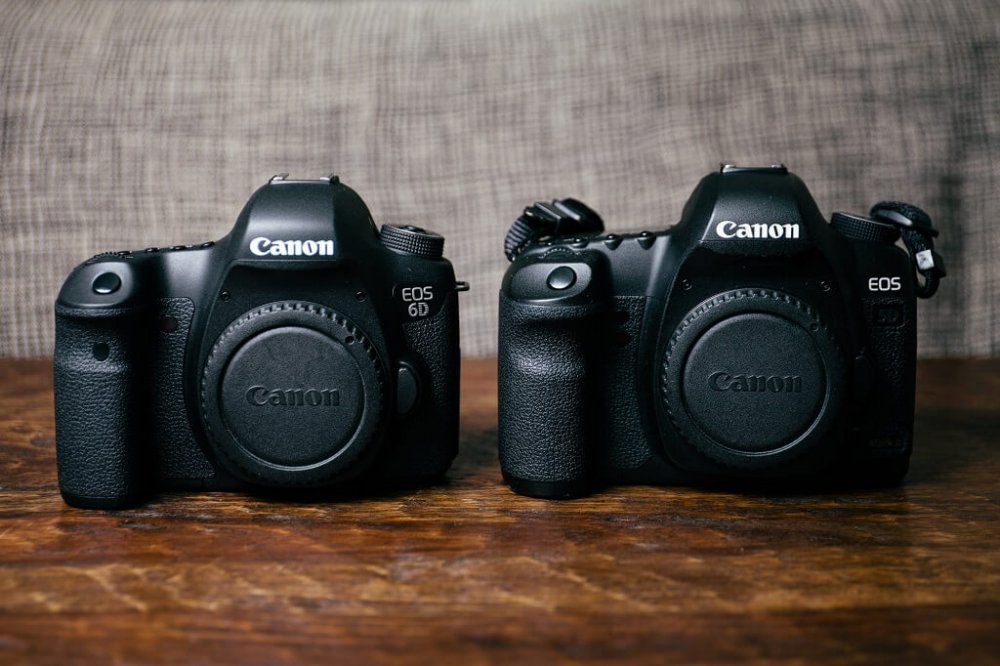






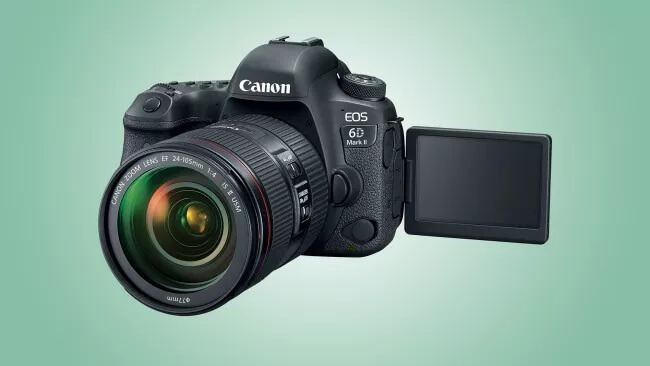














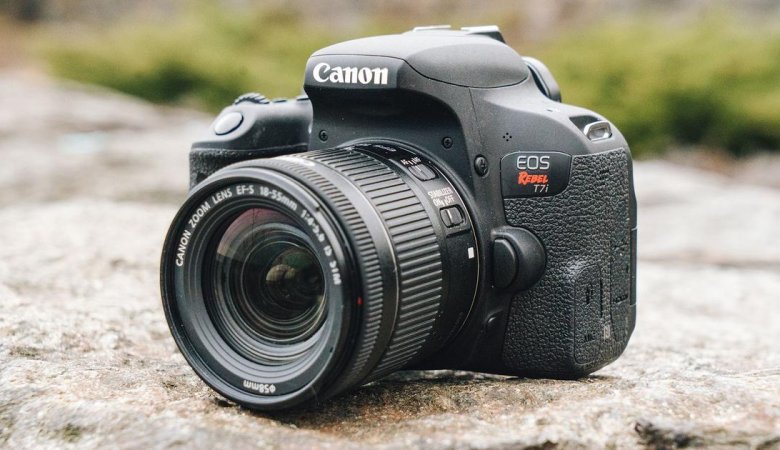
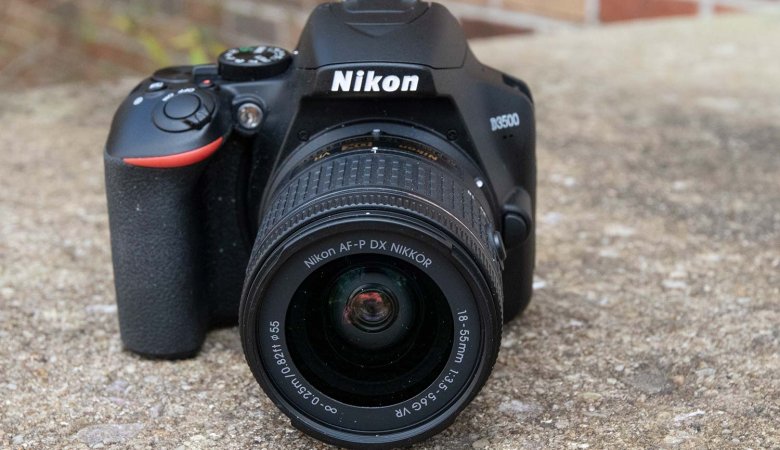
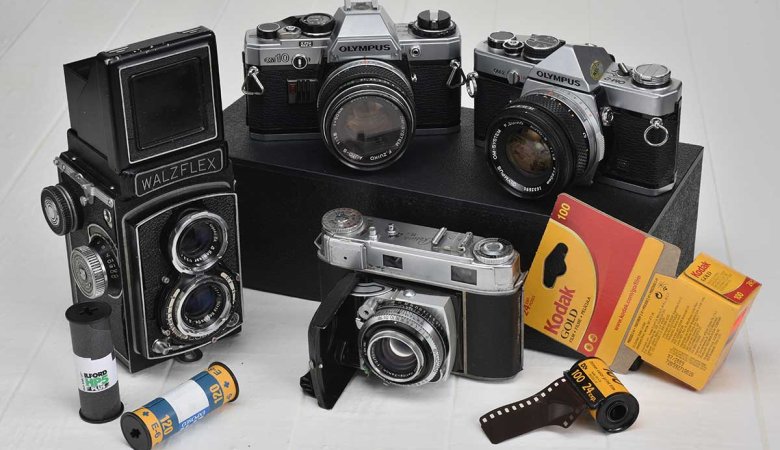

Leave a Reply